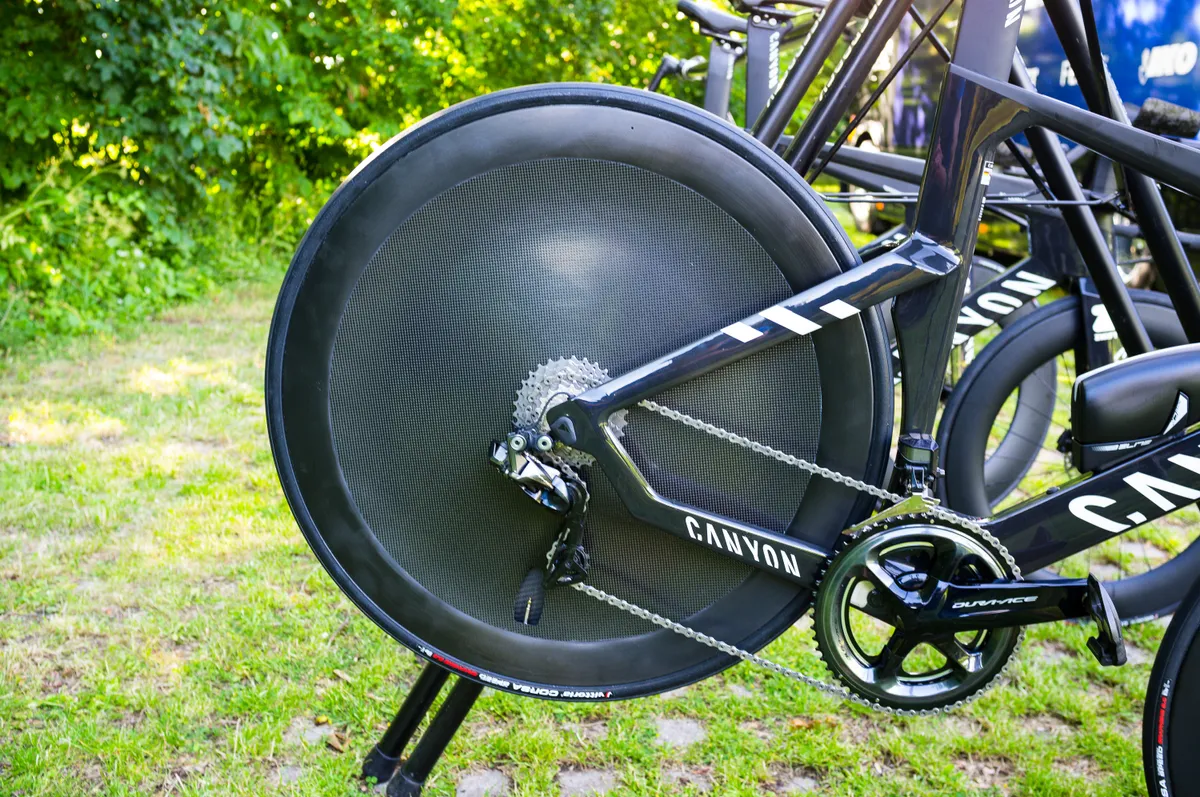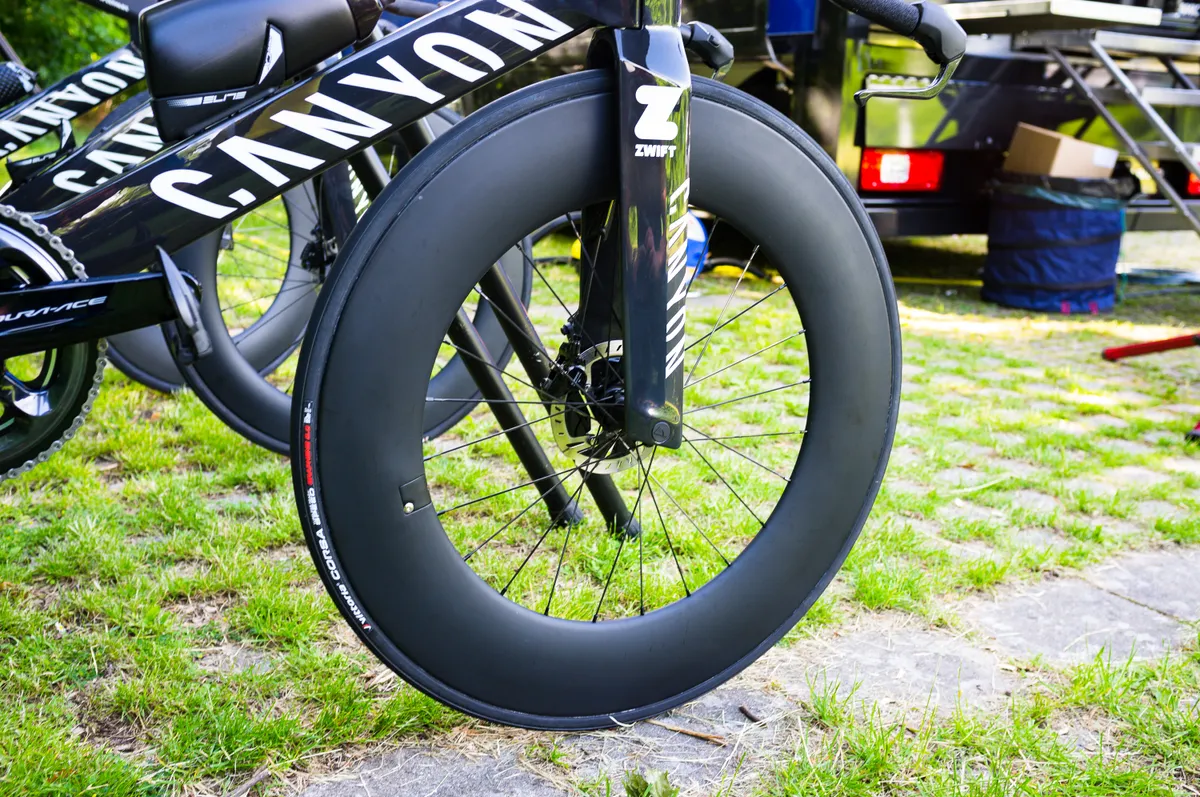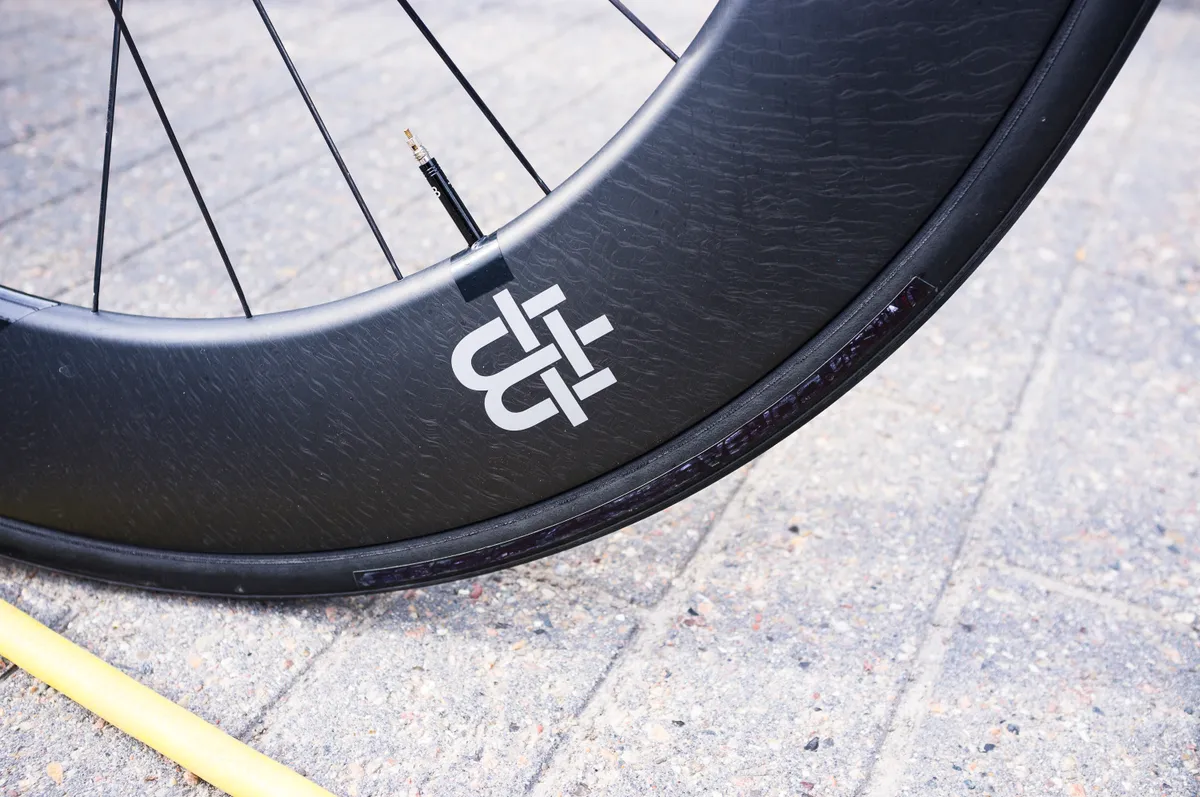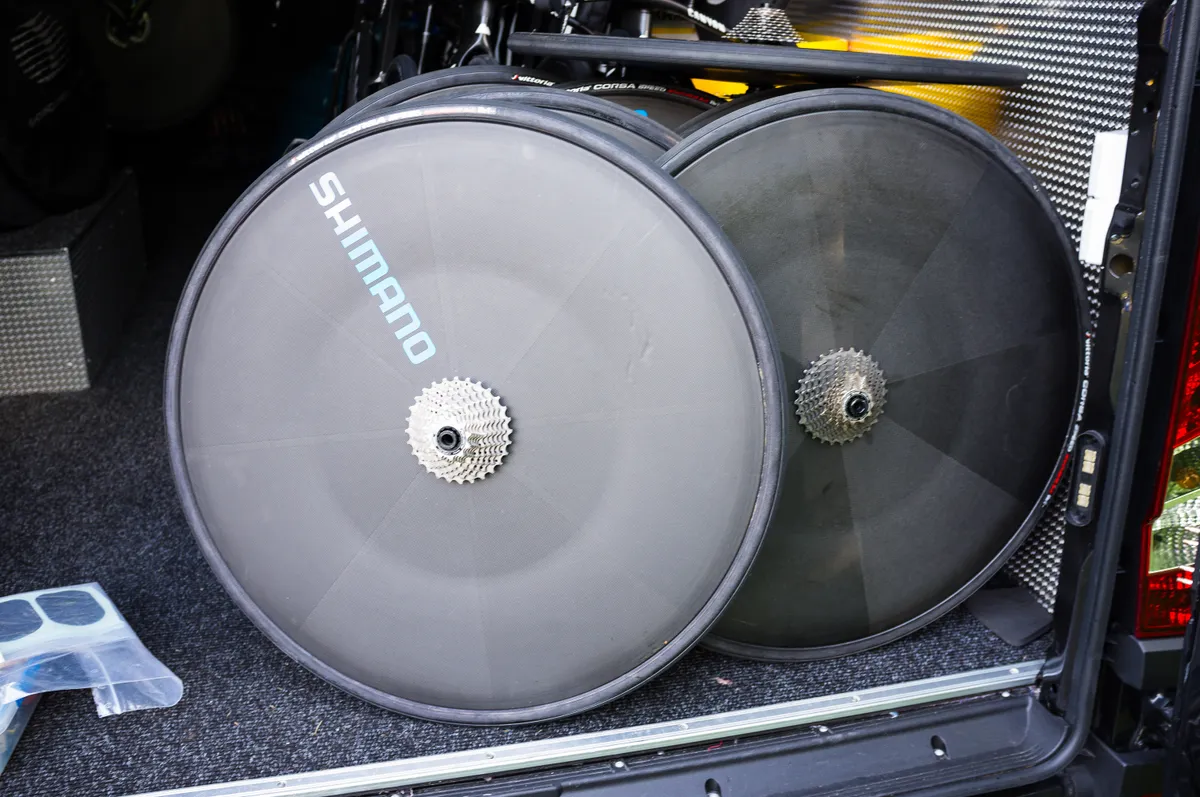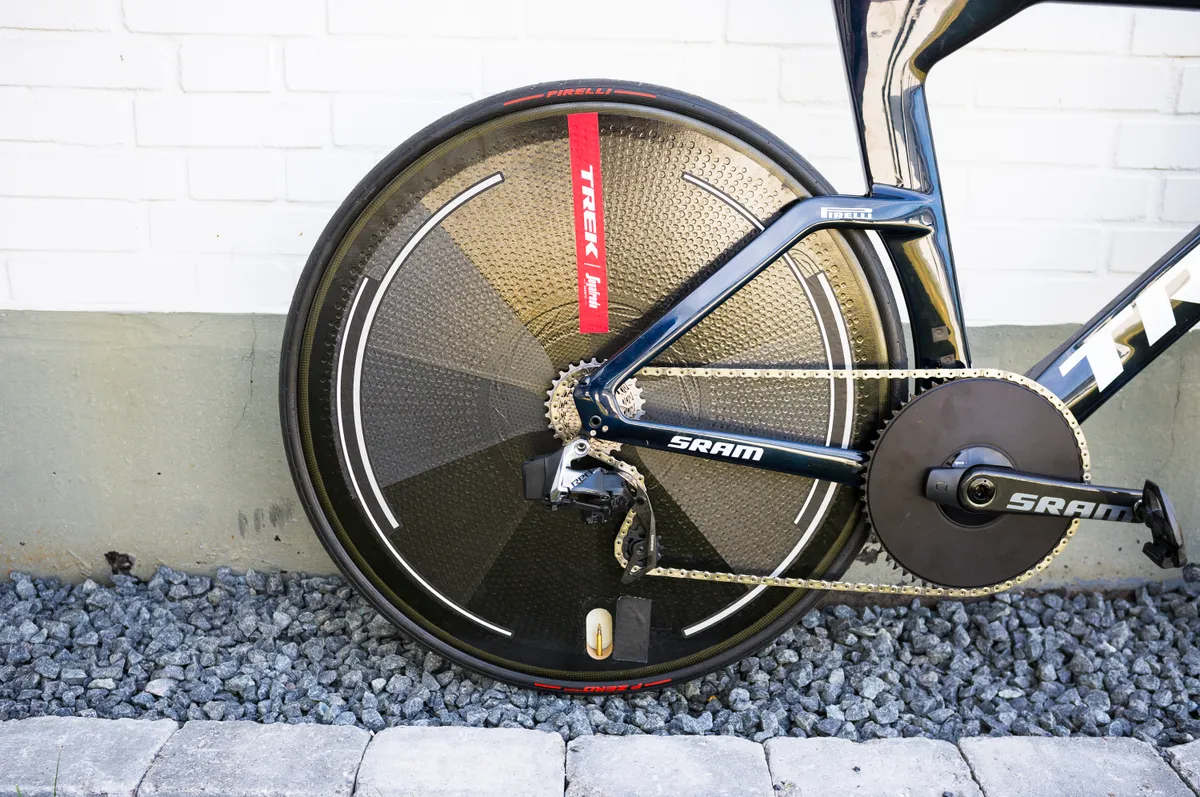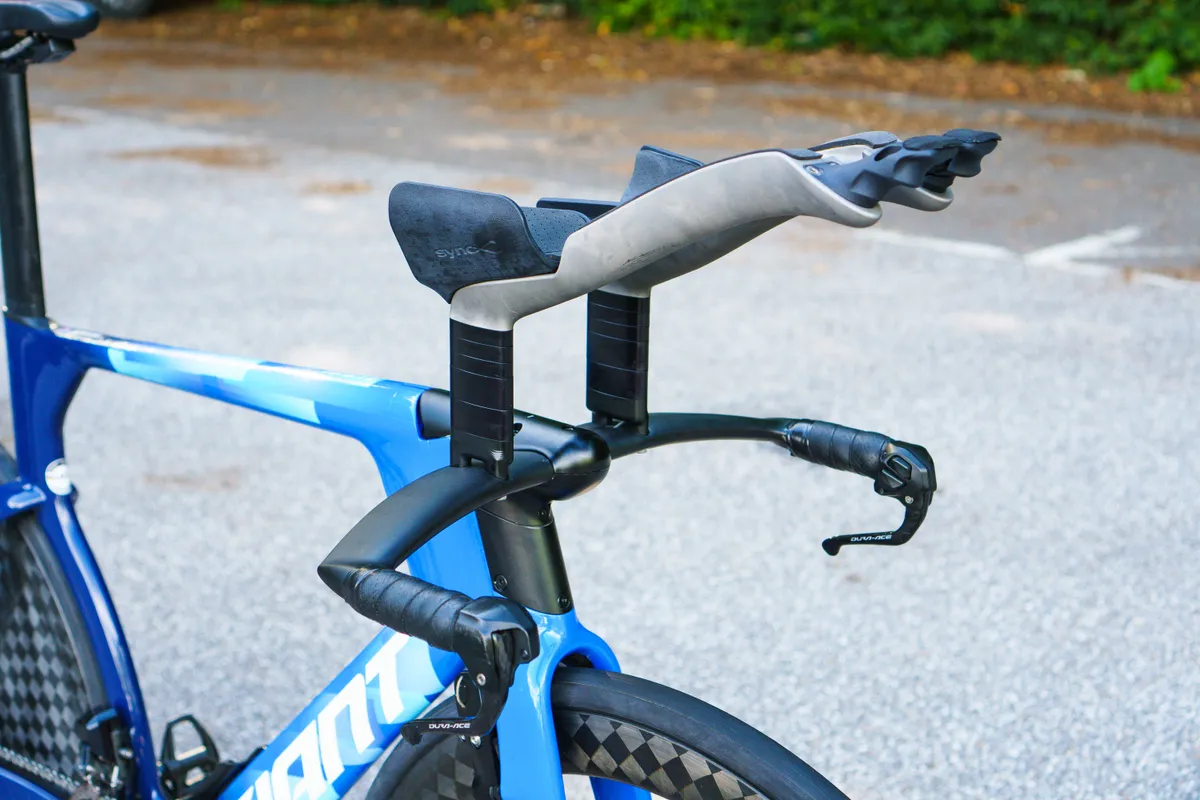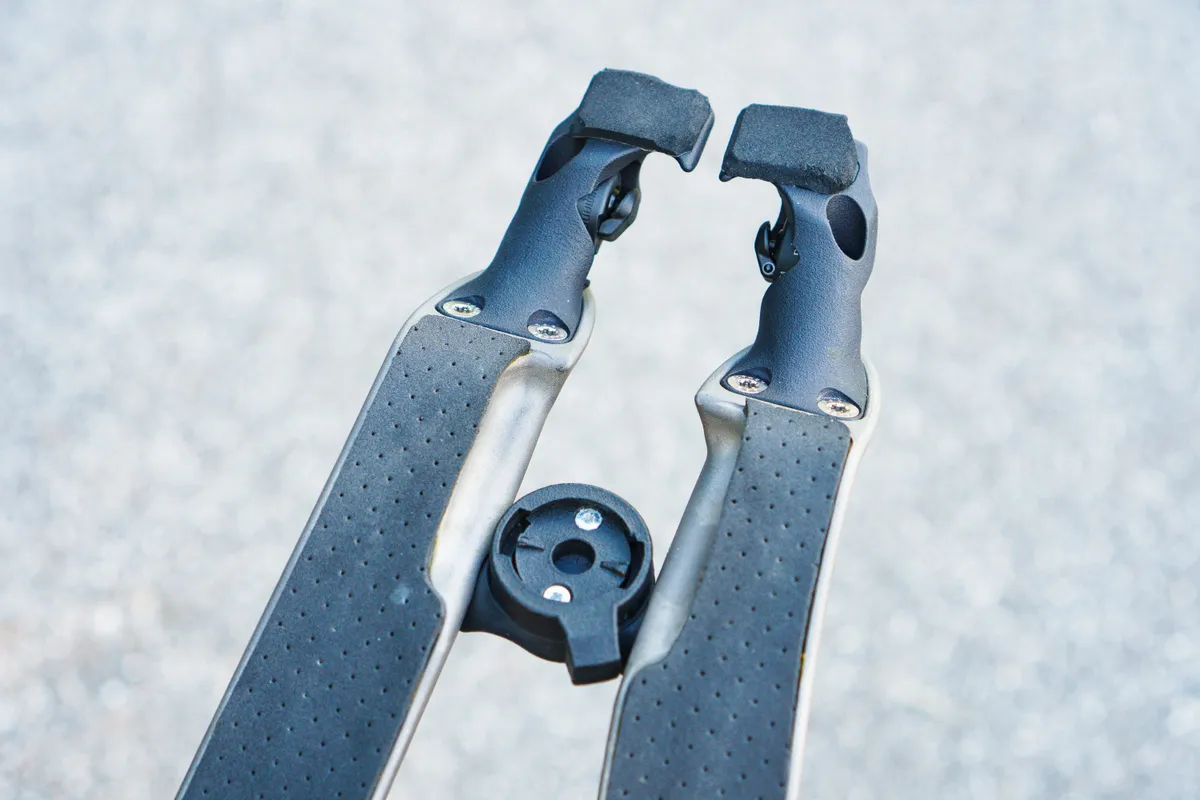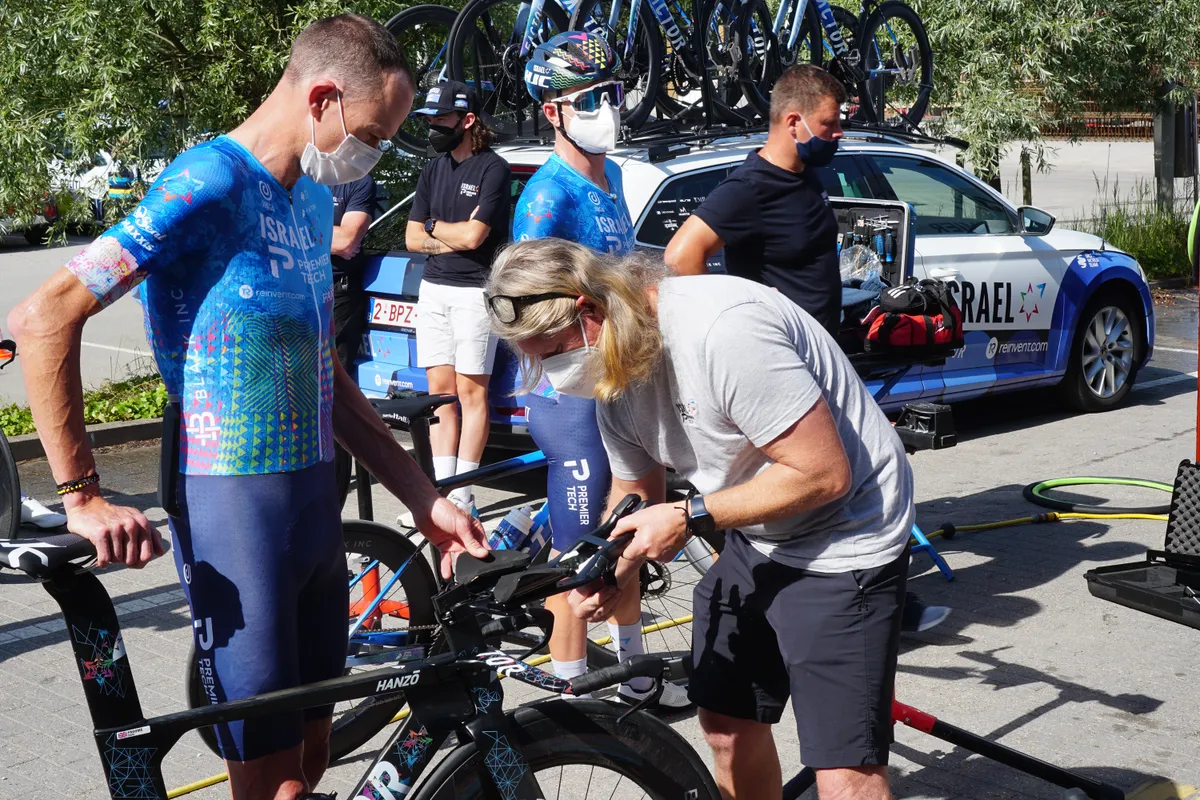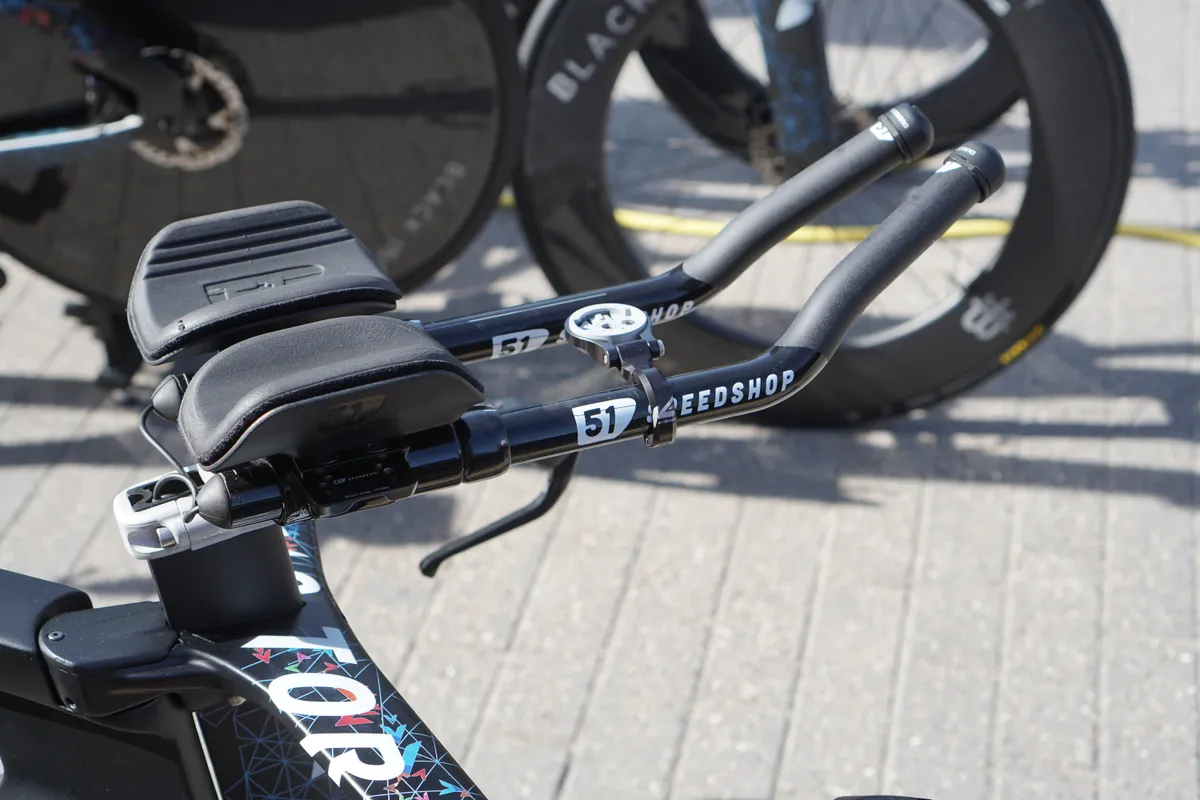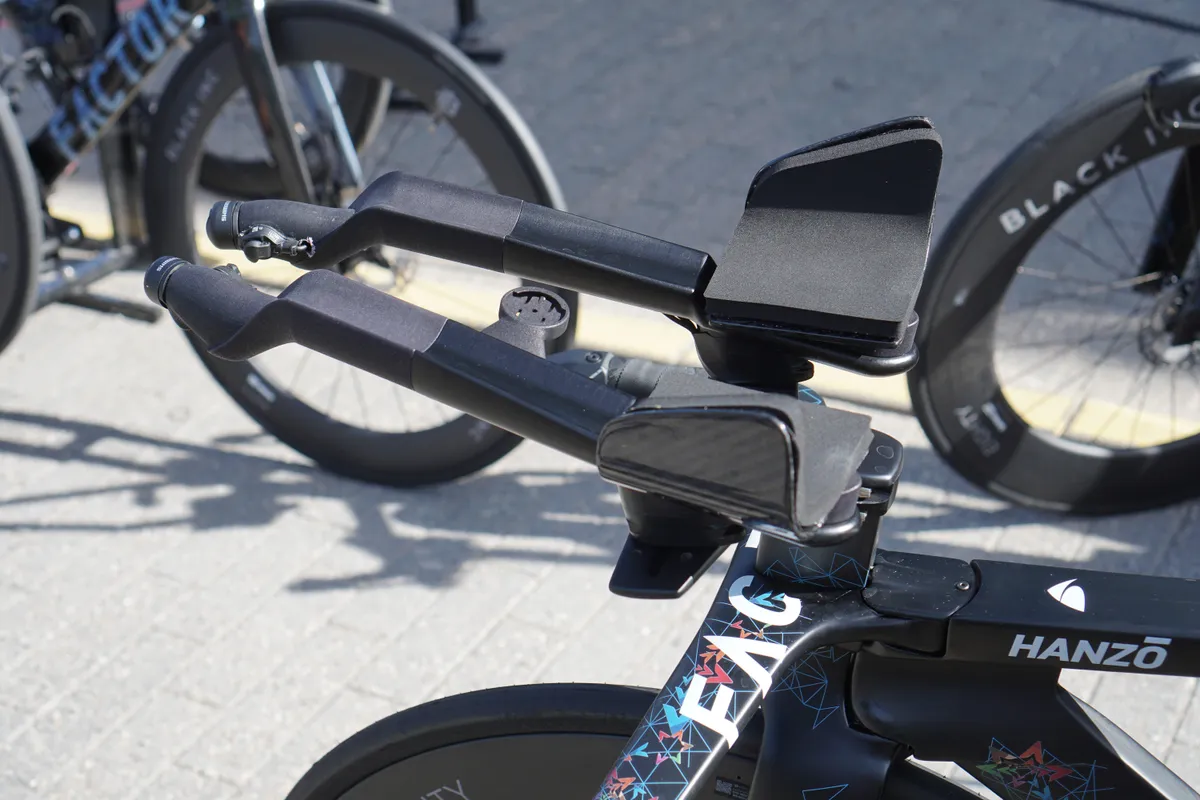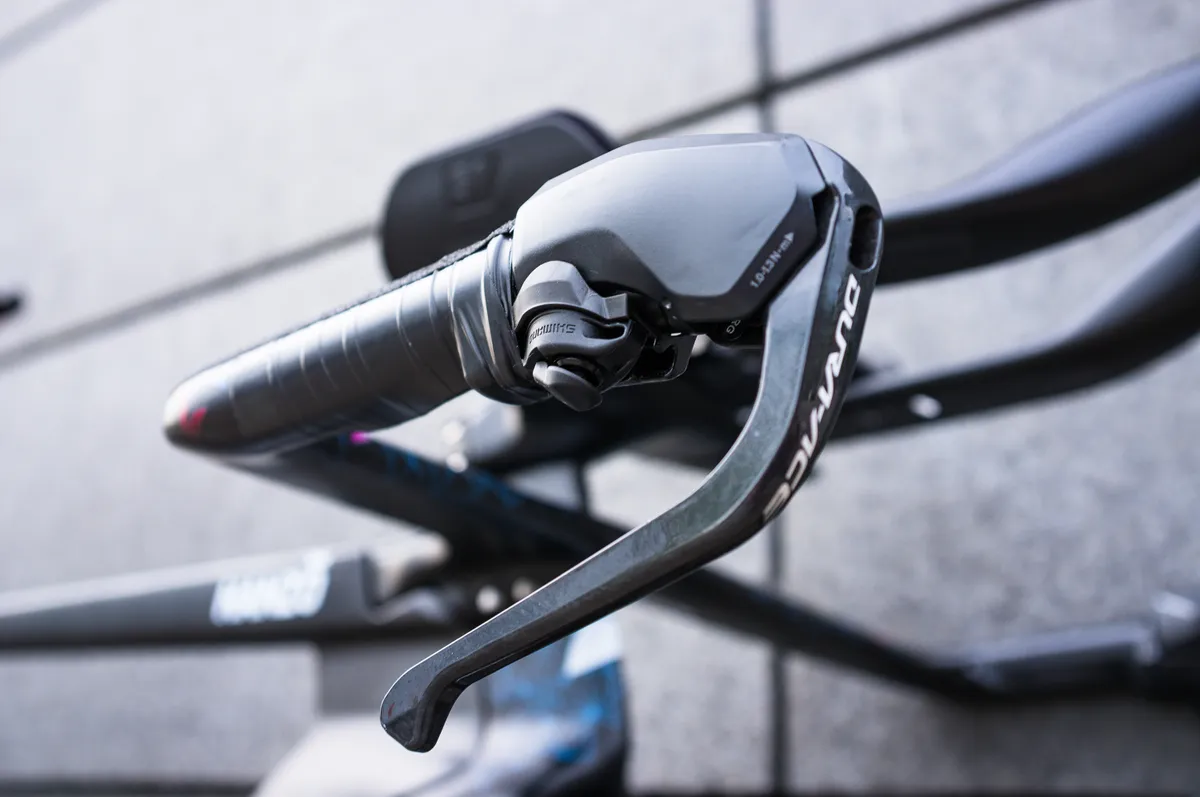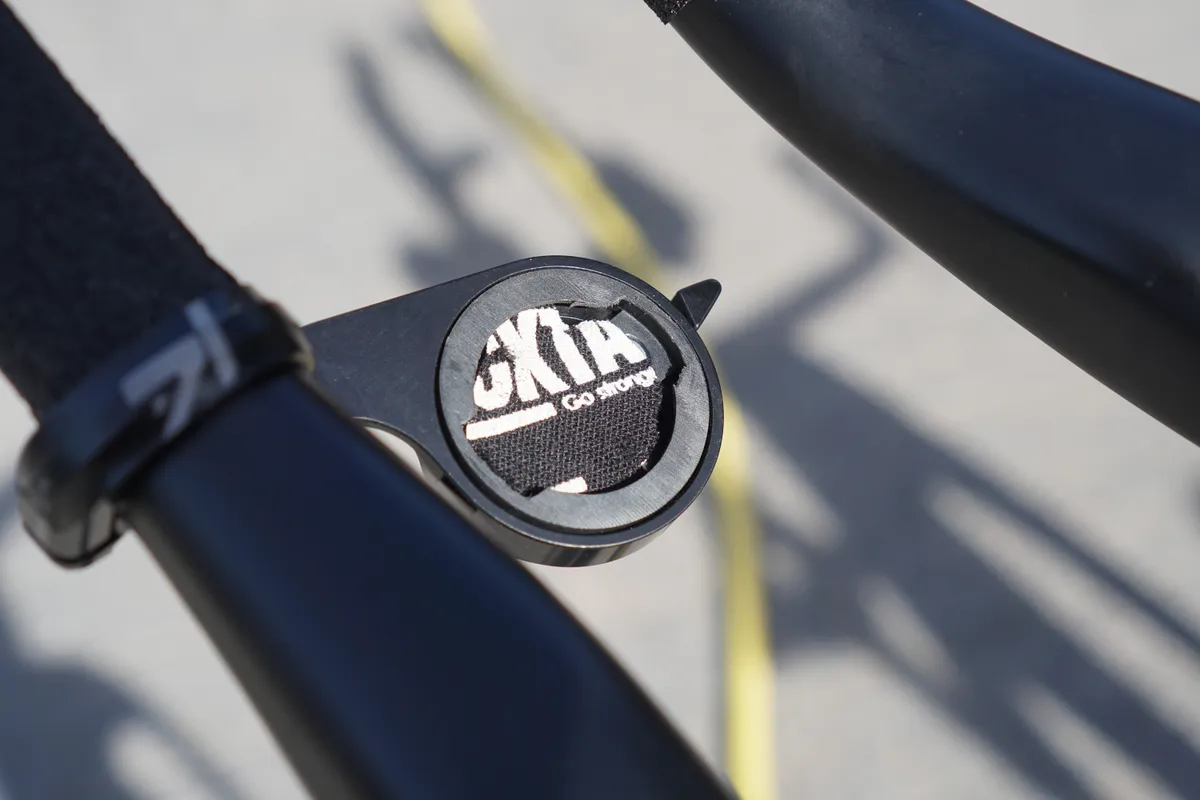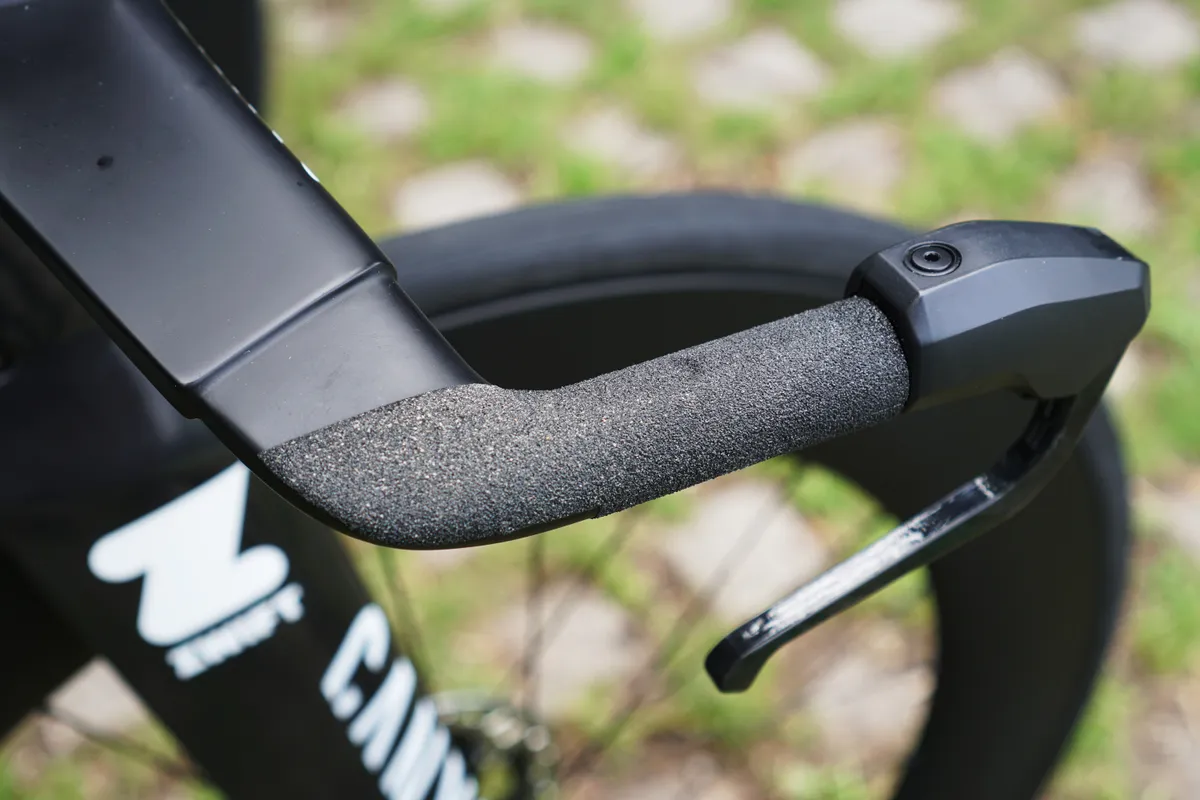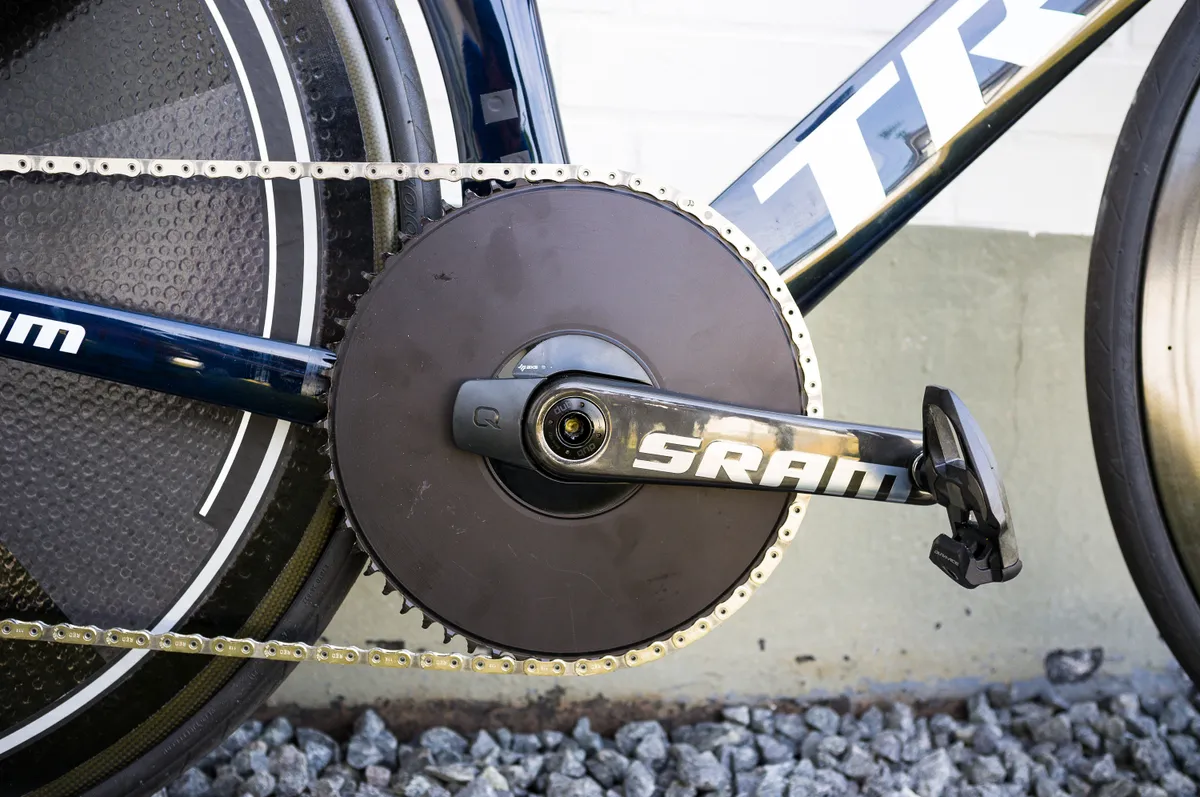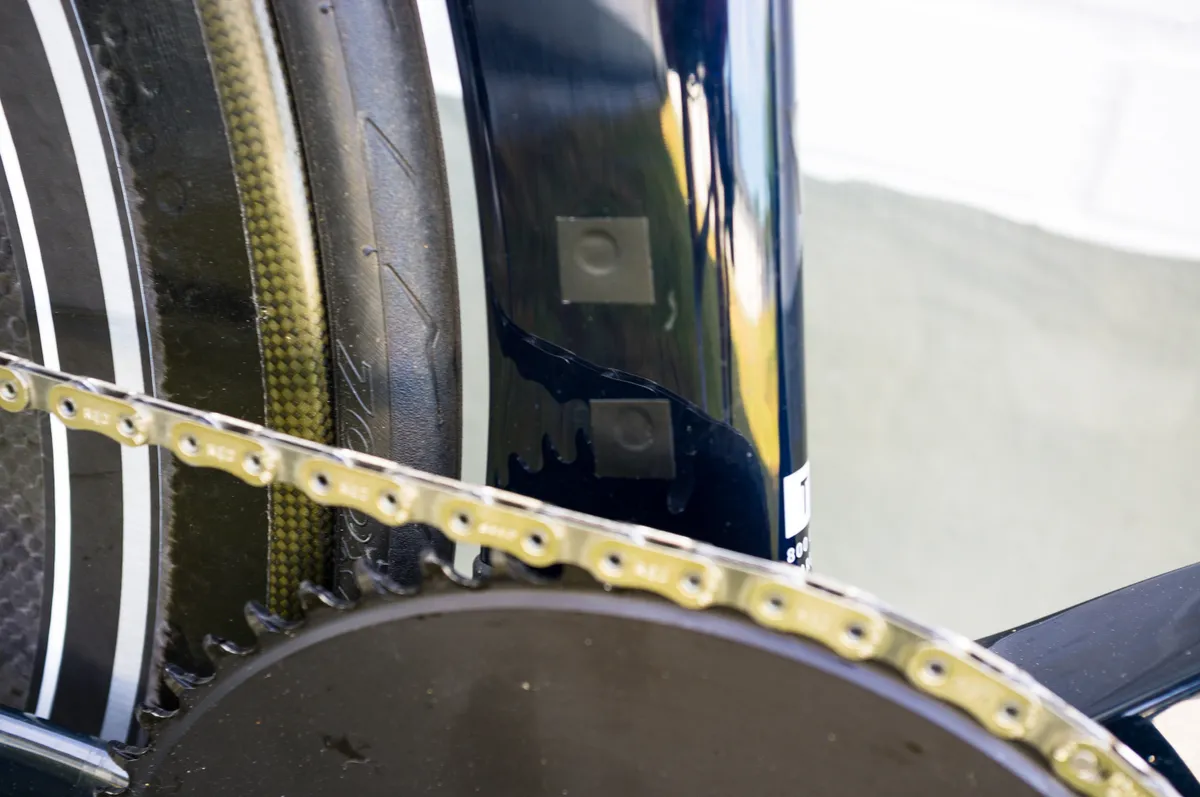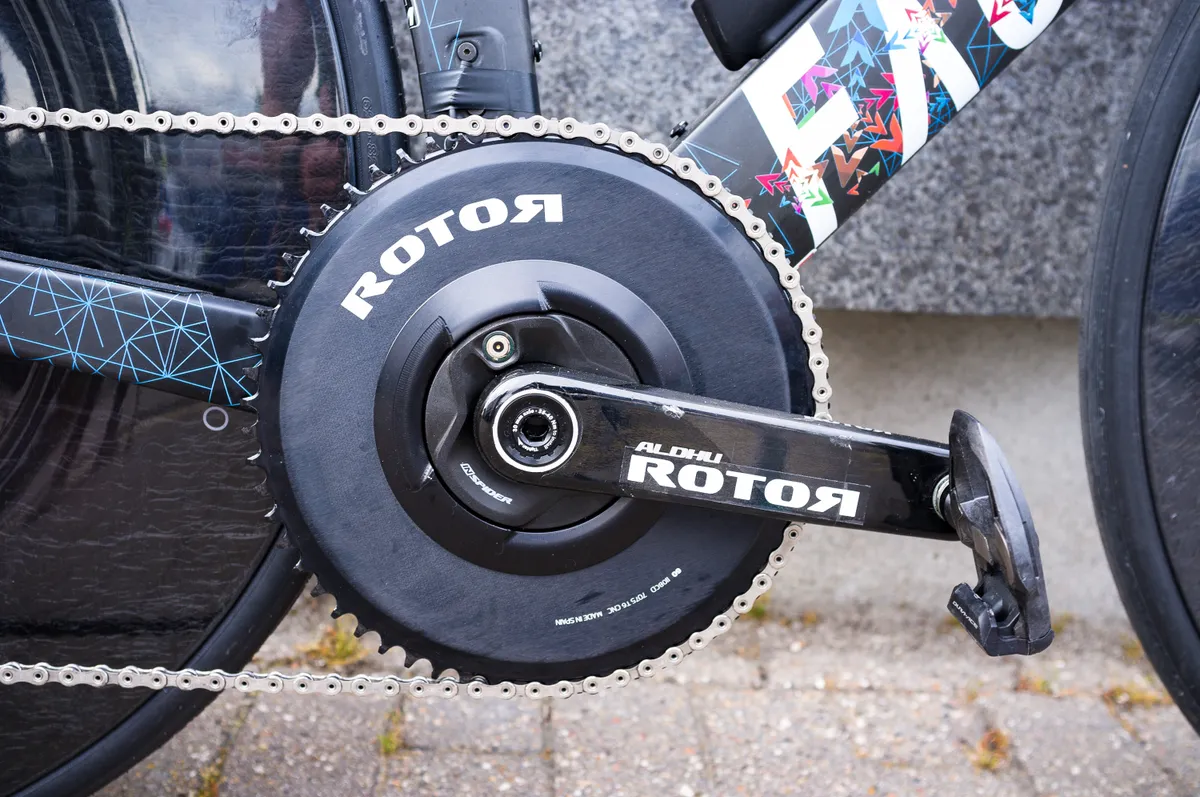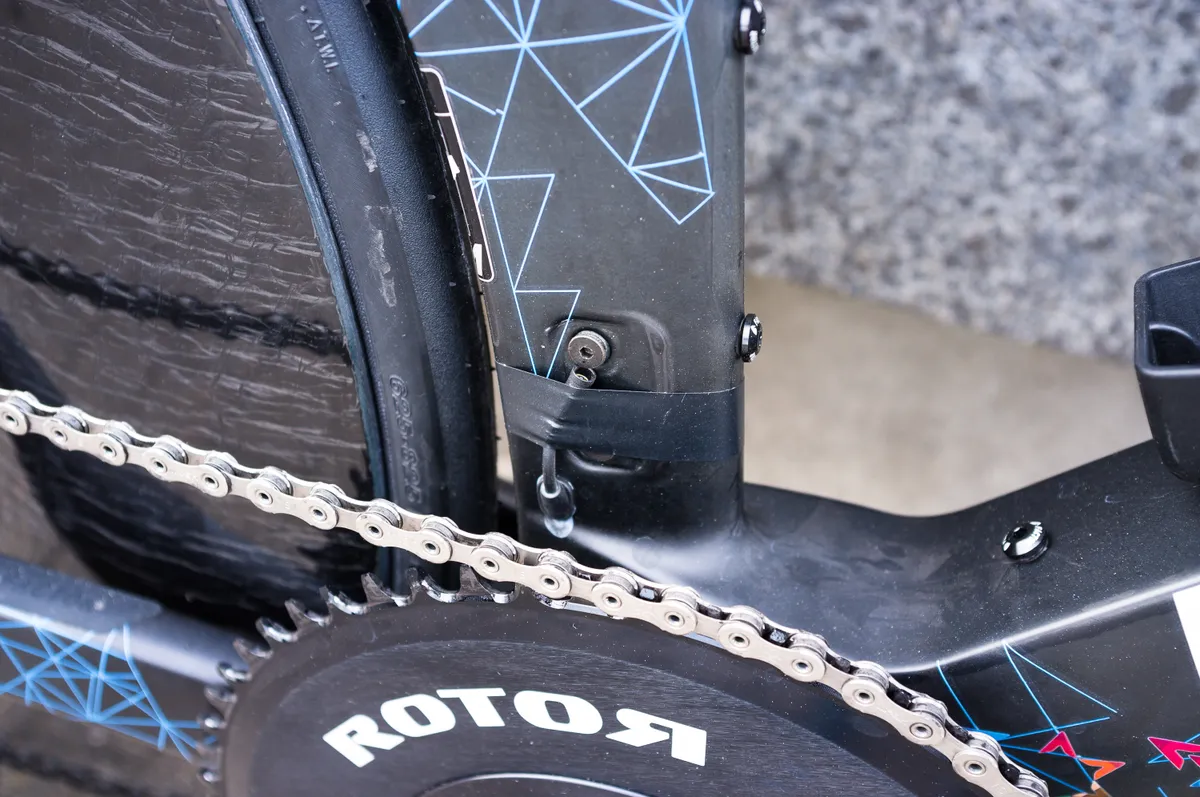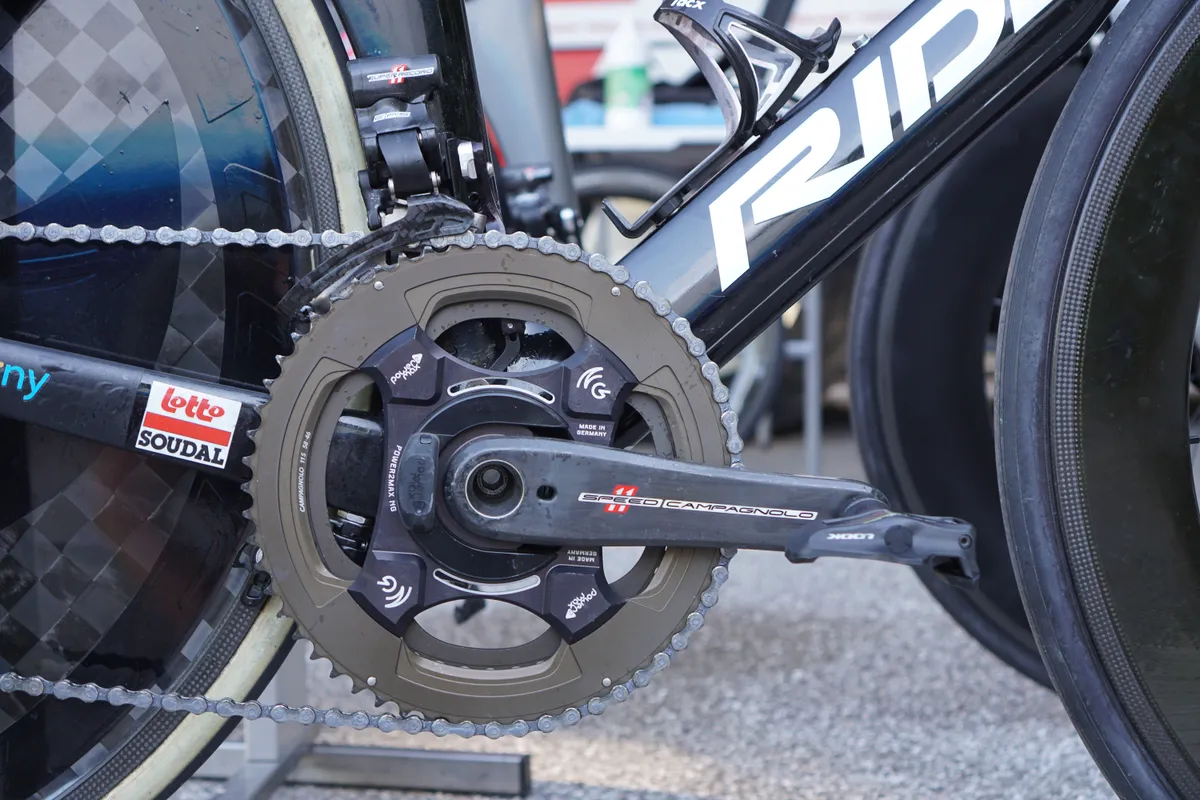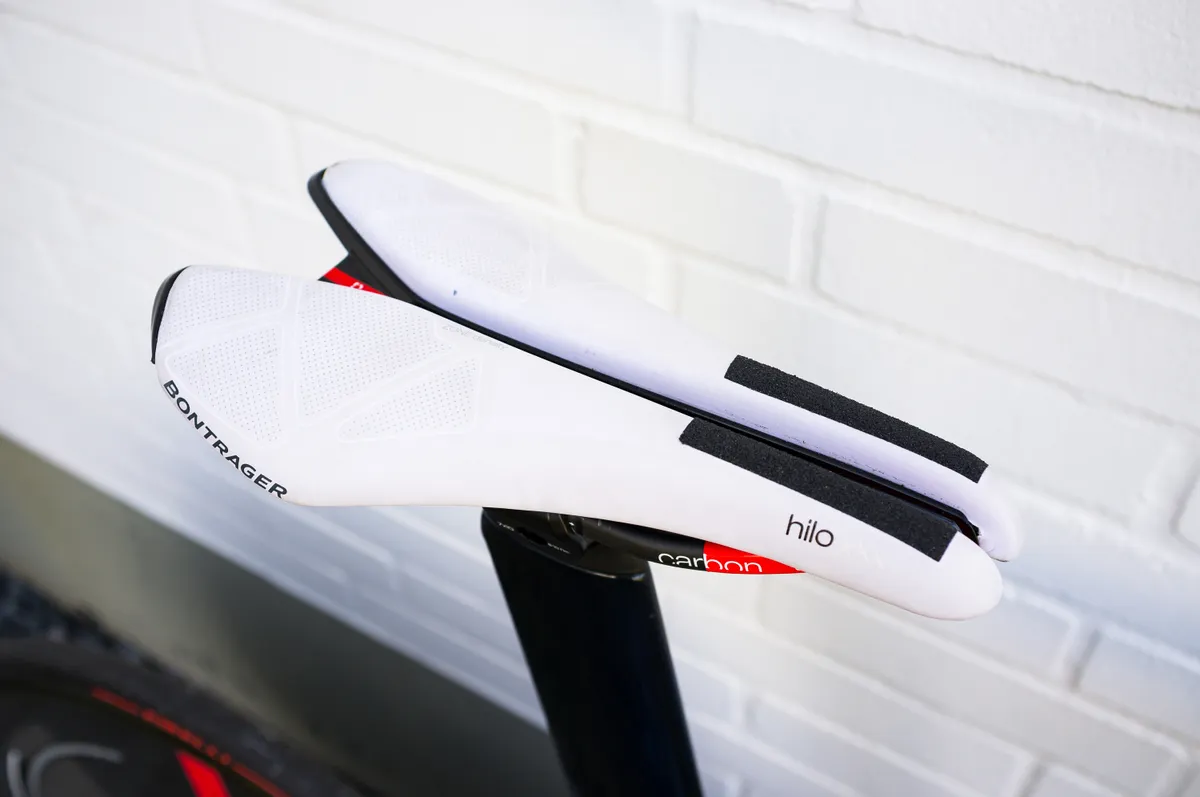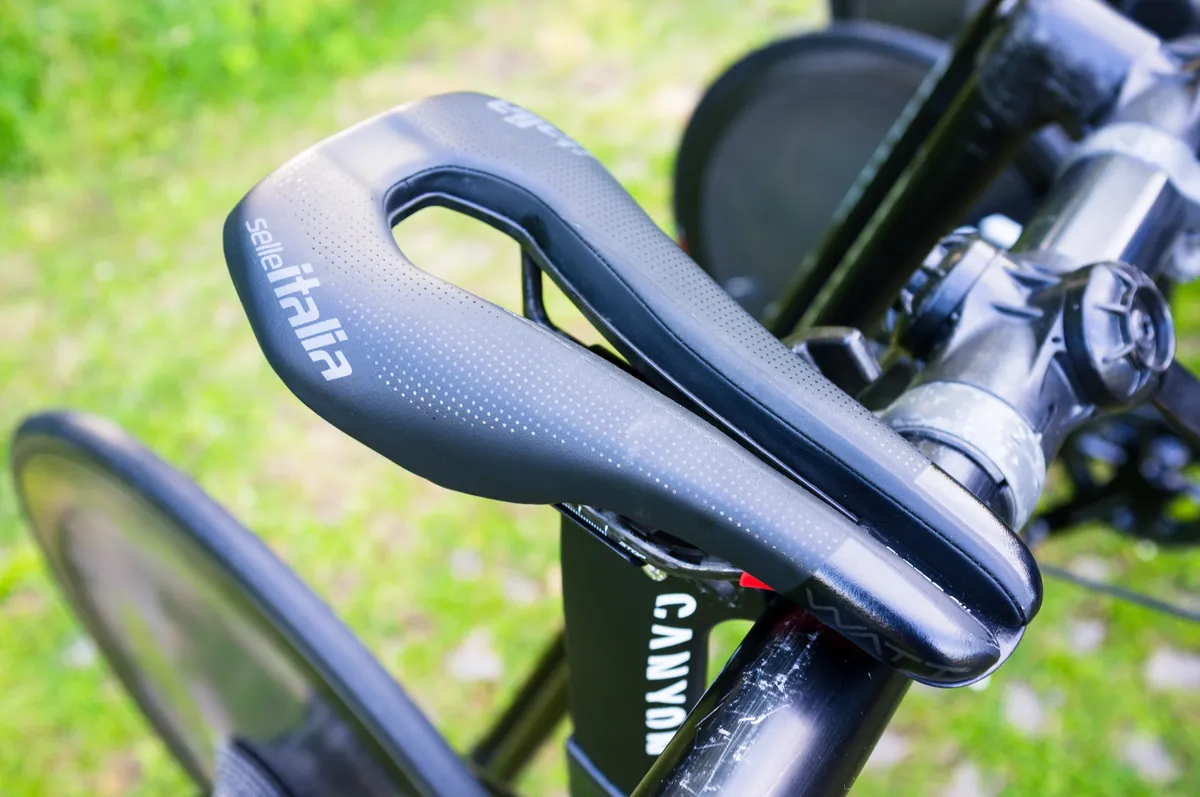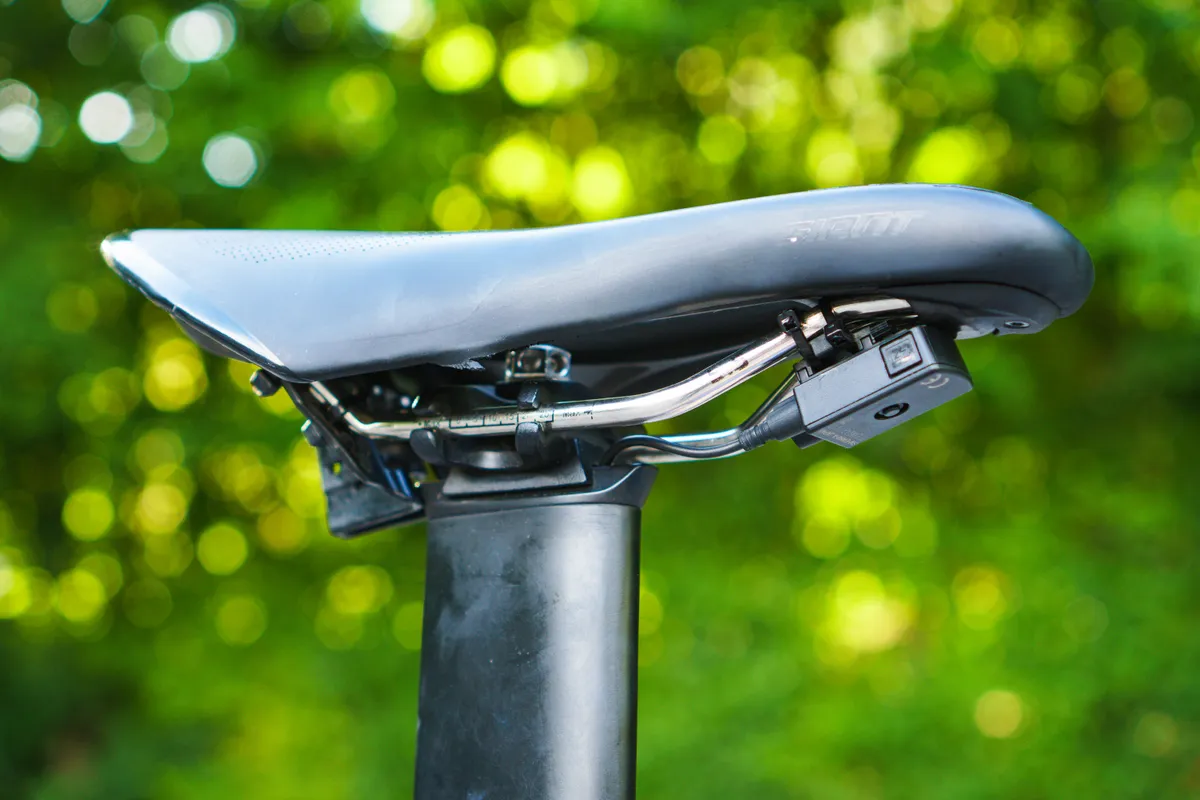While the road bikes of WorldTour riders don’t see the same degree of intricate customisation as times past, time trial bikes are another matter.
When every split second counts, teams often give riders a little bit more leeway to find a faster setup, as well as anything that can help make holding an extreme time trial position more tolerable – even if it goes against official sponsorship arrangements.
With this year’s Tour de France beginning with a flat 13.2km time trial around the streets of Copenhagen, we toured the team hotels looking for the interesting and unusual bike setups.
As you’d expect, we saw lots of deep-section and aggressive aero wheels, some monster chainrings and plenty of highly-personalised contact points.
On top of the in-depth look at Filippo Ganna’s new Pinarello Bolide F which we published today, we’ll also be bringing you plenty of pro bike galleries throughout the Tour, so stay tuned for more coming soon.
For now, here's our pick of the TT tech.
Prototype wheels and new fast tyres
While the wheels used on road stages of the Tour de France tend to be fairly predictable, time trials are when teams pull out the weird and wonderful stuff.
Aggressively aero-optimised wheels, with rims up to 100mm deep or low spoke count carbon wheels, are almost the new standard.
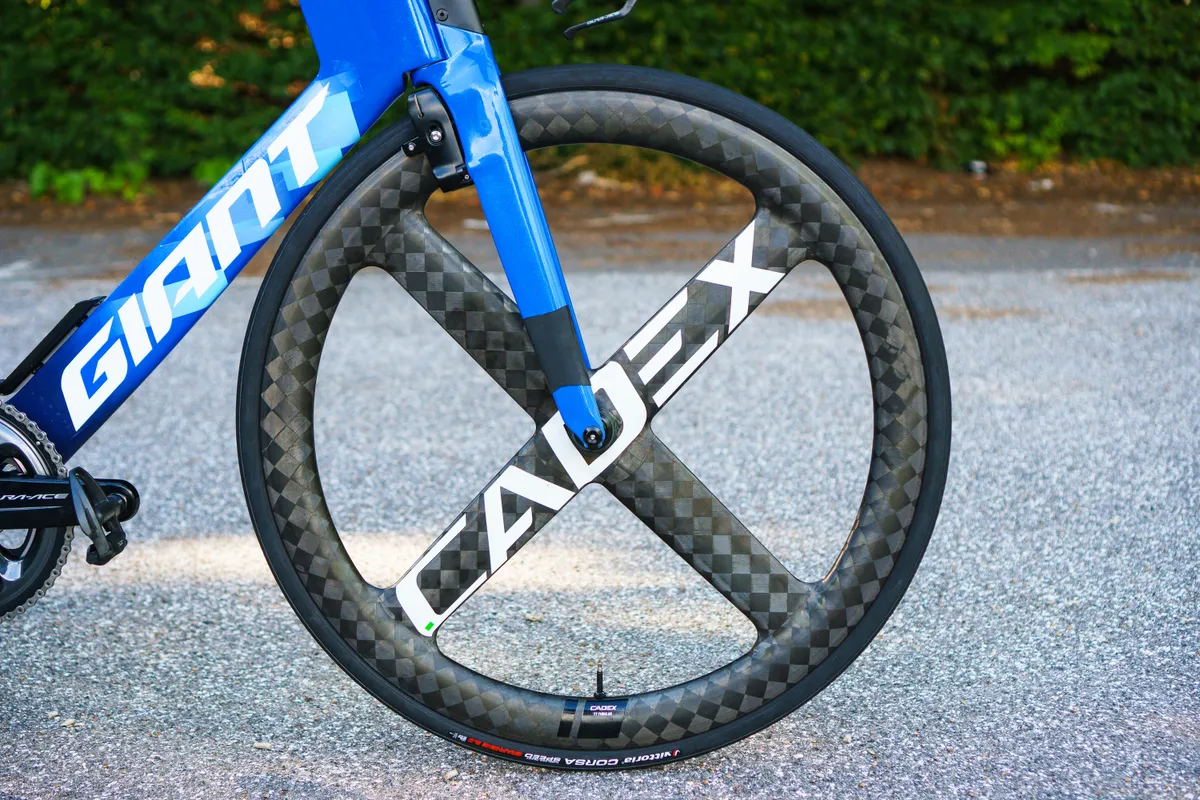
With many brands not making dedicated time trial wheels, teams often look to specialist, non-sponsor-correct options in order to remain competitive.
Full carbon rear disc wheels or ultra-deep front rims can, for example, often be seen with the branding removed, or sneakily replaced with sponsor-correct branding.
Ineos-Grenadiers had a prototype tri-spoke and full carbon rear disc wheel from its technical partner Princeton CarbonWorks.
The 7580 TS tri-spoke bucks the trend of a traditional tri-spoke carbon wheel by including Princeton’s signature wavy rim profile throughout.
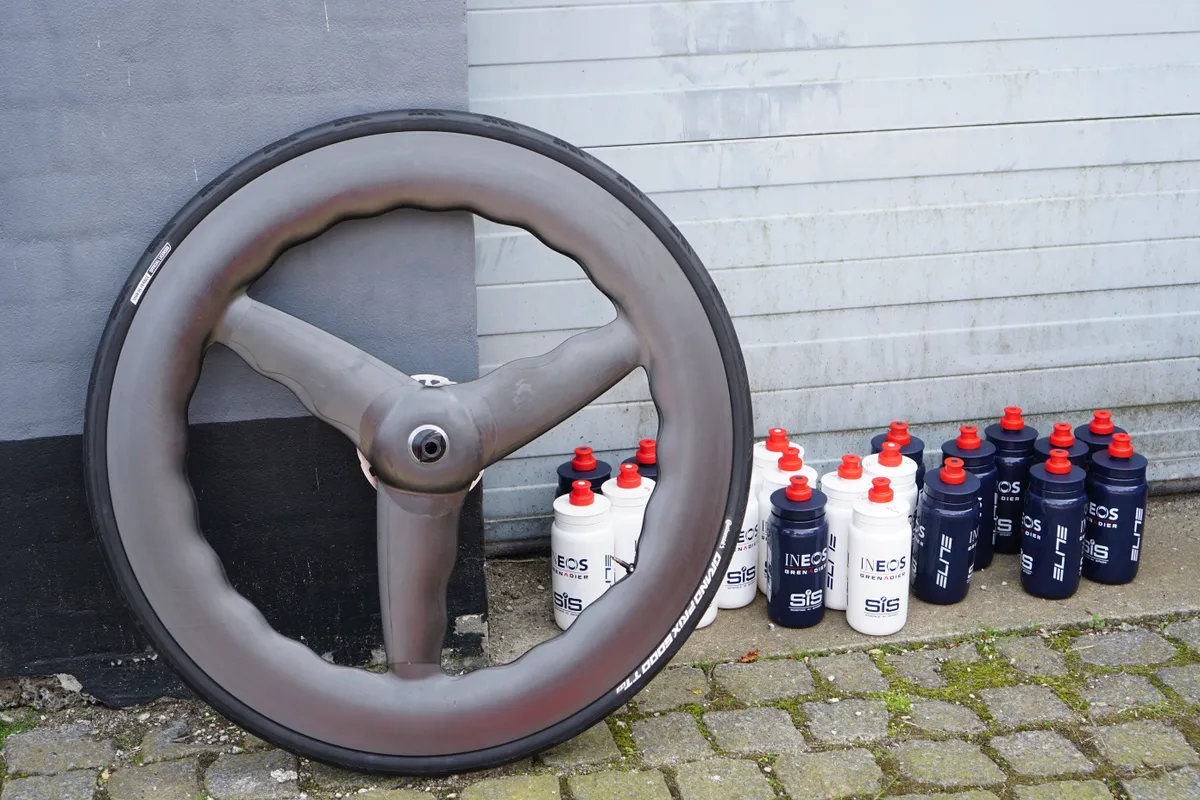
Curiously, it also appears to have an aero-profiled hub cap on the non-driveside side of the axle – something the UCI has previously said is not allowed (AeroCoach was forced to hastily redesign the hub caps for its AEOX Titan wheel, in May 2021, after the UCI decided the stock aero-profiled ones fell foul of its technical regulations).
Of course, it’s also possible that Princeton has found a creative way to interpret the UCI’s technical regulations that makes this specific design perfectly legal. Time will tell.
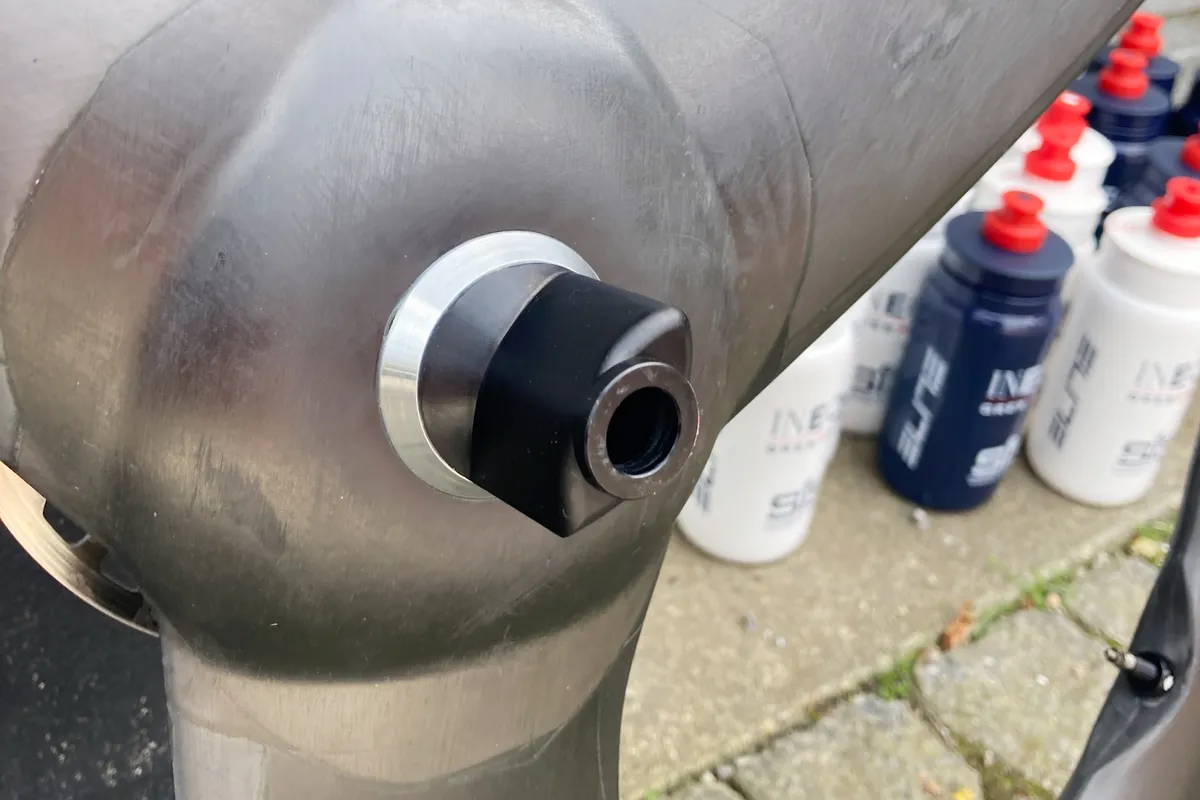
We also spotted an as yet unreleased tubeless-ready tyre on the Princeton CarbonWorks wheels – a Continental GP5000 TT TDF.
While we don’t yet have any official details from Continental about this tyre, its name and appearance suggest it’s a time trial-specific version of the brand’s highly-rated GP5000 S TR.
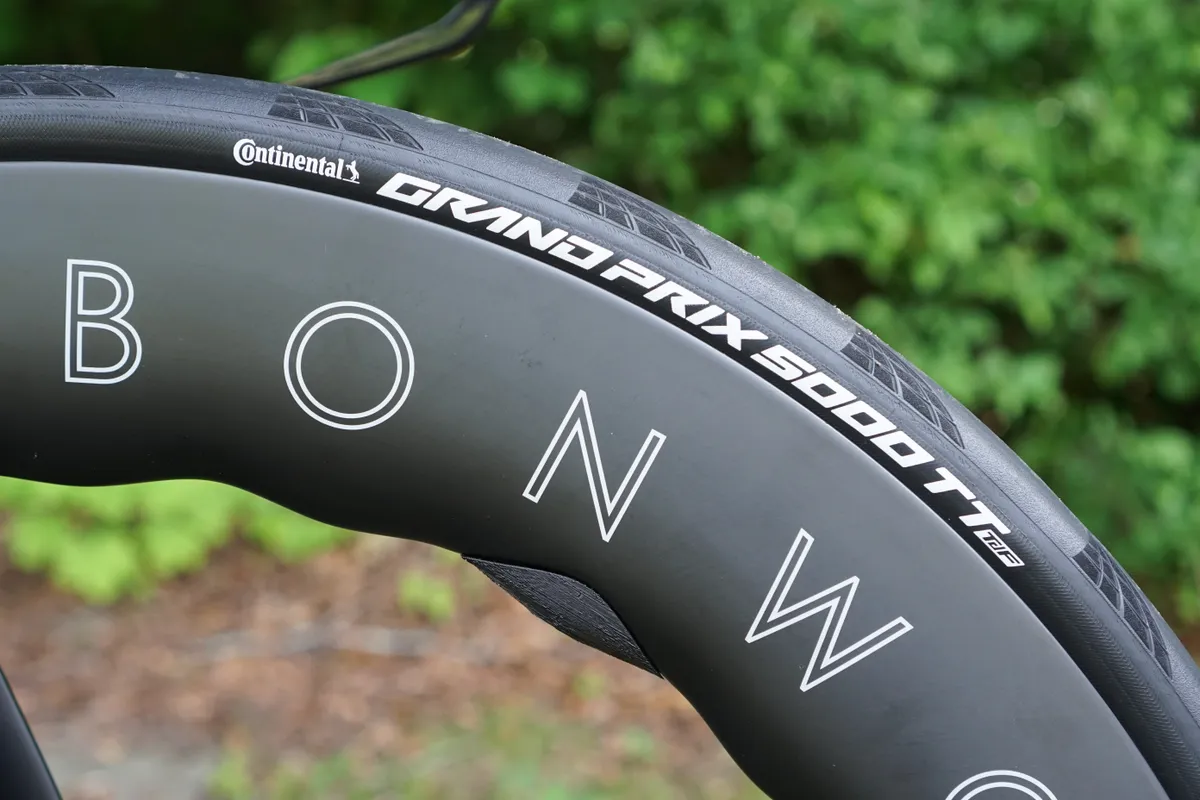
At a glance, the tread and casing appear to be practically identical but it’s possible that Continental has removed the puncture protection belt from the tyre, which could help slightly lower the tyre’s weight and rolling resistance. (Update 2/7/22: Continental has now officially launched the Grand Prix 5000 S TT TdF).
Personalised cockpits
With the rider’s body accounting for around 80 per cent of total system drag (rider plus bike), having an aerodynamically optimised time trial position is essential for anyone who wants to be competitive.
While most riders previously used stock setups with basic armrests and round aero extensions, more and more riders are taking a custom or semi-custom approach (usually at considerable expense).
Luke Durbridge (Team BikeExchange-Jayco), for example, is using a set of 3D-printed titanium extensions made by Sync at the Tour de France.
Mads Pedersen's carbon fibre extensions are, we’re told, made for him by Bontrager – part of the Trek family (who is a title sponsor for Pedersen's team, Trek-Segafredo).

The purported gains are two-fold. Firstly, there’s a claimed ergonomic improvement, as the rider’s upper body weight is spread more evenly across a greater surface area.
Secondly, the non-round shapes of the custom extensions are typically moulded to improve the transition between the extension and the rider’s forearm, which is said to confer an aerodynamic benefit.
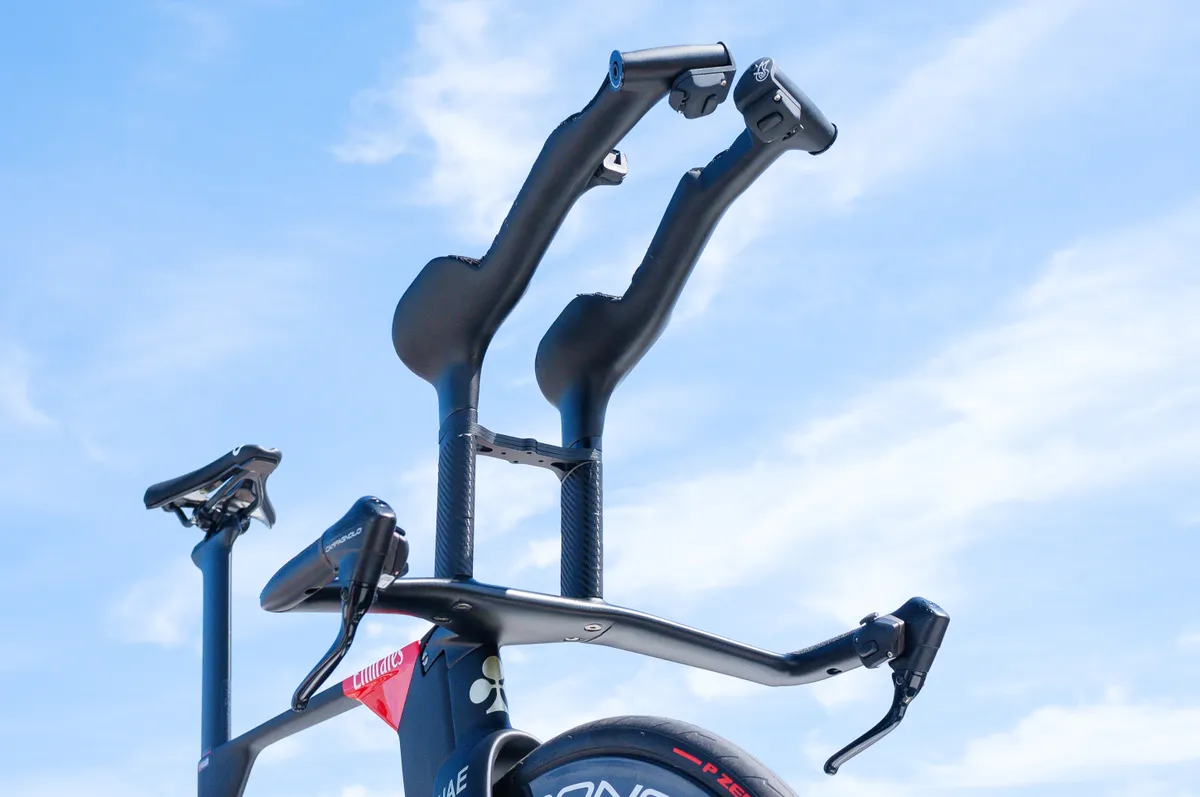
Perhaps unable to secure a bike that properly fits him, Marc Soler’s (UAE Team Emirates) Colnago TT1 time trial bike has an absurd amount of spacers under the armrests.
Soler’s extensions look like those made by Dutch aerobar specialists, Speedbar.nl, and make creative use of the Campagnolo EPS satellite shifters on the grips at the tips.
Optimised drivetrains
With team mechanics cleaning bikes on a daily basis, most riders at the Tour de France needn’t worry about power lost to a dirty drivetrain.
That doesn’t mean there aren’t improvements to be made, though.
With the opening time trial taking place over a short, flat course, many riders opted for huge chainrings to take advantage of the high speeds of the parcours.
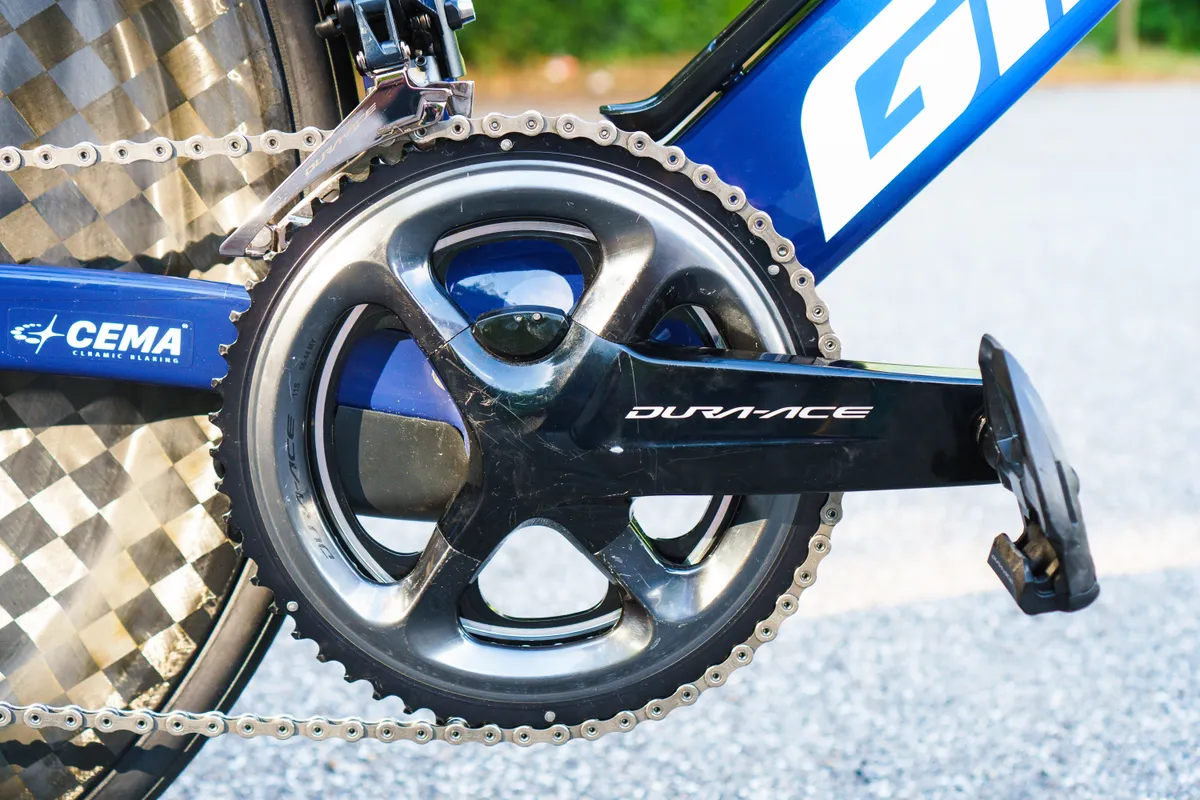
That said, we didn't expect to see every rider with a 58 or 60T chainring riding around in the smallest rear sprocket at all times.
Instead, the big front chainrings are mostly intended to help improve chainline, by allowing riders to use a sprocket closer to the middle of their cassette.
This also helps keep them out of the smallest rear cogs, which cause greater frictional losses as the chain has to articulate at more extreme angles.
The biggest chainrings we saw in the flesh were 60T aero 1x dinner plates, on the bikes of Mads Pedersen (Trek-Segafredo) and Jakob Fuglsang (Israel-Premier Tech).
According to a press release from FSA, though, that’s nothing special – some EF Education-EasyPost riders will apparently be using FSA’s new 64T carbon fibre 1x chainrings at this year’s race.
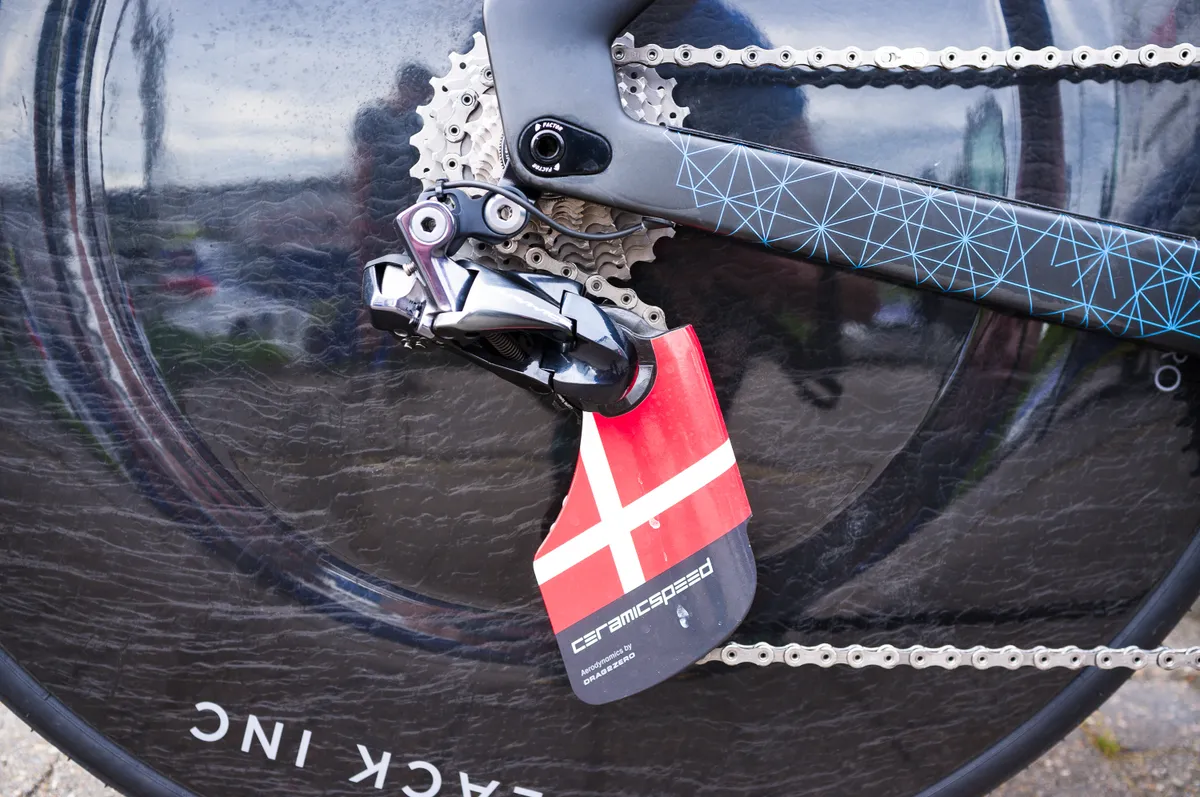
Saddles
The saddle is a crucial contact point on any bike, but this is especially true on time trial bikes, where the aggressive positions can lead to unwanted pressure on sensitive areas (to put it lightly).
For that reason, time trial-specific saddles are common. With short lengths and wide noses, these are designed to put a rider forward over the bottom bracket and reduce soft tissue pressure.
It’s also not unusual to see riders and teams adding their own customisations to saddles, whether it be skateboard grip tape (ouch), or using the saddle rails as a convenient and aerodynamic location to mount a Di2 junction box.
Look out for more tech coverage from the 2022 Tour de France throughout the race.
